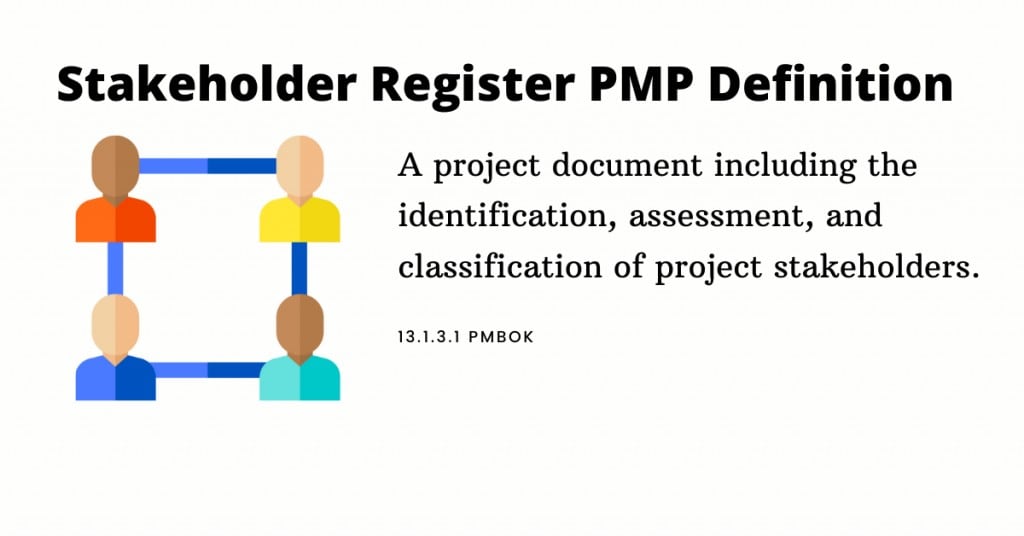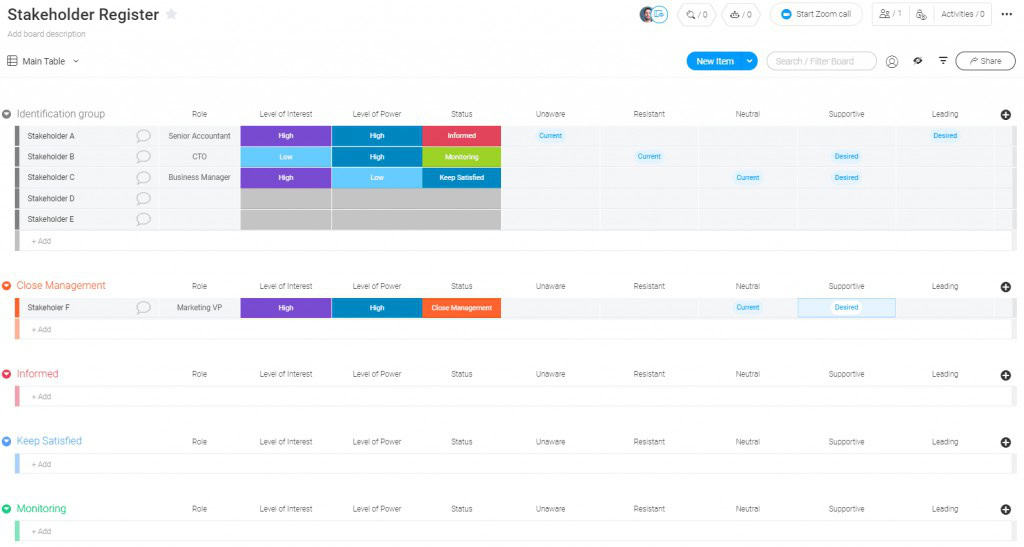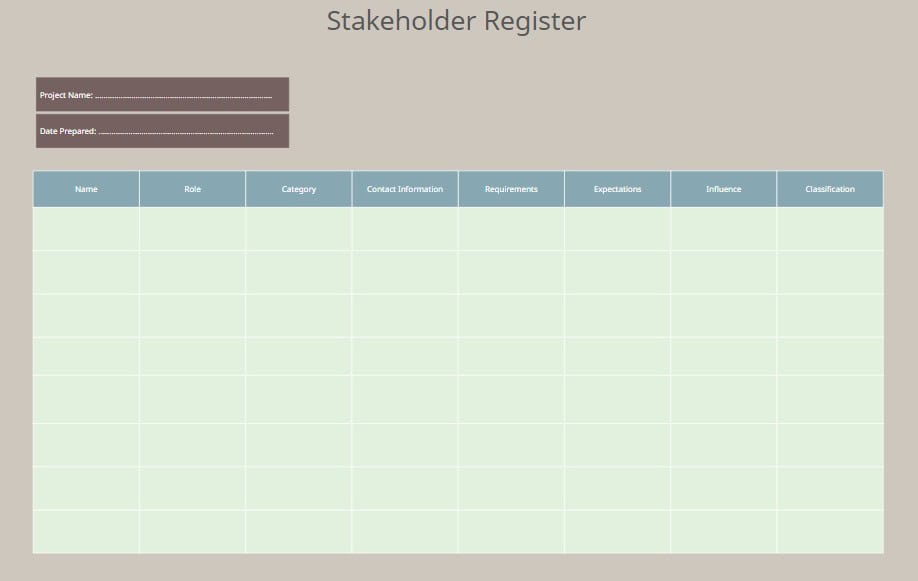
A stakeholder register is a document that contains all of the information related to stakeholders and their interests. The purpose of this document is to help identify and manage risks before they become problems.
Having a comprehensive stakeholder register is one of the most important things to create when working on a project because it helps provide insight into what stakeholders want. The stakeholder register will help track who said what about which subject and when that communication took place.
This document can benefit any future issues with your stakeholders and provides peace of mind for everyone involved in the process. A stakeholder’s name should always appear at least once so they feel included throughout all stages, even if their opinion doesn’t change or have no bearing on decisions made later on down the line.

Why do you need to use a template?
Templates are a lifesaver for any project. They provide the framework and details that enable you to get back on track with your work, saving time in reviews as well as new set-ups every time someone else requests something different from what was done before. Our stakeholder register contains all essential information required for a successful plan.
Save your own copy of our free register from above.
Who is responsible for creating and managing?
The project manager is responsible for the stakeholder management plan. They involve all those who will be affected by their work and gather information about how they expect things to go and what level of involvement each person should have to meet and exceed expectations.
When you should use a template in an agile environment vs. waterfall?
Agile development requires certain key components that will help your team stay on track to be most effective. You should use a template in these cases where you know the scope and timeline are definitive because it ensures everyone is working from the same page at all times, which can save time down the line if something changes unexpectedly.
You can use a template to organize all aspects of your business in waterfall development. People have different roles and responsibility levels, making their job easier with the right tools.
How to create a stakeholder register
The register is a document that has all the necessary information for someone who needs it.
You’ll need to decide which stakeholders deserve their own space on the register. These could include people with high power, influence, and interest level, those who are resistant or supportive towards your ideas–or simply unaware of them yet.
It’s also worth noting how many concerns each stakeholder has so we know where our time goes when dealing directly one individual at a time rather than collectively as an organization.
We recommend following a 3 step process of identification, evaluation, and classification. Every stakeholder register should contain
Stakeholder Identification
- Name
- Title
- Role
Evaluation
- Requirements
- Concerns
Classification
- Power (High or Low)
- Interest (High / Low)
Identification
The process of identifying stakeholders begins before a project is even created. The very first step should be assessing their needs and interests, so we know whom our audience will be for this charter or policy document to make sure that all those who have an interest in it are involved, to make sure that all those who have an interest in it are involved.
Creating a stakeholder management template is the quickest, easiest way to get your plan complete. You’ll be able to save yourself huge amounts of time by filling out all required information fields without overlooking anything important, which means consistency will prevail throughout everyone.
Review current and past project stakeholder registers for similar individuals, groups, or companies. Talk with your team members to identify people at higher levels within operational areas to maximize potential communication paths when talking about future work opportunities – this could include someone from Human Resources as well!
Evaluation
Speak to the stakeholders individually to determine what are their requirements and concerns. You are also determining their interest in the project at the same time which will be essential data when you are classifying the stakeholders.
Explore vendors closely linked with projects handled by them because they are often aware who might be interested parties should you need more information on behalf-related opportunity announcements.
Classification
The Power/Influence grid is a simple technique that can help project managers determine who should be given more attention. For complex organizations, you can consider using a stakeholder cube.

It’s based on the idea of power and influence. You group stakeholders by their level in those categories: High Power (High Influence) or Low-Power/Low-Insight individuals with medium levels for both qualities.
The key thing about this system, though – as with any decision-making process. It needs input from all sides; otherwise, there may well end up being major misunderstandings later down the line.
Choosing Templates Options
| Software | Advantages | Disadvantages |
| Google Docs | Eliminates need for storage | The potential risks of storing documents outside the organization are significant. |
| Is an intuitive and easy-to-use tool for collaborating on documents. | ||
| Microsoft word | A versatile and user-friendly program. | Not always intuitive. |
| It’s available practically everywhere, making it easy to use wherever you happen to be. | It can be expensive. | |
| Excel | It is the best way to store data. | It is hard to consolidate |
| You can visualize data easily with charts. | It is prone to human error. | |
| It’s Multidimensional | It is challenging to edit PDFs for free |
We have collected a list of free templates you can utilize on your future projects. These templates are available in Microsoft Document, Excel, and PDF. There are also some online tools that provide Stakeholder Register template which you can save online.
Stakeholder Register Template Word
- TemplateLab: 50 Free Word Register Templates
Stakeholder Register Template Excel
- TemplateLab: Free Excel Templates
- Canvas Sample Course: Free Download Excel Register Template
- Rocketlane Blog: Free Download of Excel Template
- Smartsheet: Free Excel Template
Stakeholder Register Templates PDF
- Sample Templates: Free PDF Templates 10+
- Stakeholder Map: Free PDF template
Online Tools to Create Free Stakeholder Register Templates


FAQs
What is included in a stakeholder register?
It is a record containing information about the people who may have an interest in or influence the project. This can include names, titles, roles, and responsibilities for each person’s involvement with it.
What is the purpose of a stakeholder register?
The purpose of the register is to list all those who a project might impact and their degree of influence on it. This document becomes an important tool for planning, forming teams, developing success criteria, and ensuring your organization can successfully meet its goals.
What is a stakeholder register and why is it important?
A stakeholder register is a central tool for any project or program. It documents who will be impacted by the work and their level of influence on that particular task at hand; it helps with planning decisions like choosing participants for future projects and team formation and development when deciding how best to address certain needs across communities in need.
Who is responsible for creating and managing?
The project manager is responsible for the stakeholder management plan. They involve all those who will be affected by their work and gather information about how they expect things to go and what level of involvement each person should have to meet and exceed expectations.
Shane Drumm, holding certifications in PMP®, PMI-ACP®, CSM, and LPM, is the author behind numerous articles featured here. Hailing from County Cork, Ireland, his expertise lies in implementing Agile methodologies with geographically dispersed teams for software development projects. In his leisure, he dedicates time to web development and Ironman triathlon training. Find out more about Shane on shanedrumm.com and please reach out and connect with Shane on LinkedIn.